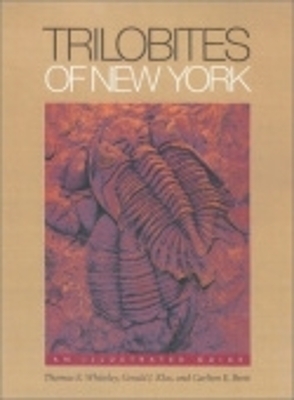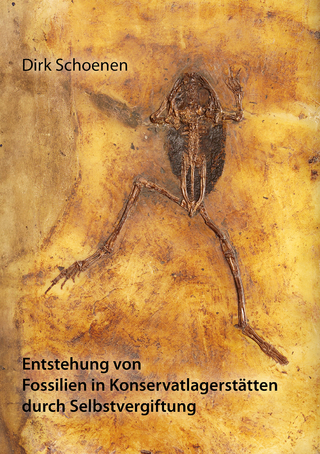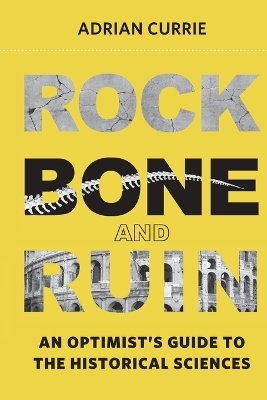
Trilobites of New York
An Illustrated Guide
Seiten
2002
Comstock Publishing Associates (Verlag)
978-0-8014-3969-8 (ISBN)
Comstock Publishing Associates (Verlag)
978-0-8014-3969-8 (ISBN)
- Lieferbar (Termin unbekannt)
- Versandkostenfrei innerhalb Deutschlands
- Auch auf Rechnung
- Verfügbarkeit in der Filiale vor Ort prüfen
- Artikel merken
"Trilobites are the most lifelike of fossils—many well-preserved specimens belie their great antiquity and seem almost ready to arch their bodies, peer about with their compound eyes, and crawl forward as if to complete a journey that was interrupted...
"Trilobites are the most lifelike of fossils—many well-preserved specimens belie their great antiquity and seem almost ready to arch their bodies, peer about with their compound eyes, and crawl forward as if to complete a journey that was interrupted hundreds of millions of years ago."—from the Foreword"New York State is and has long been a magnet for trilobite hunters.... New York's trilobites were among the first illustrated fossils in North America.... Many outstanding localities in New York State, from the majestic Ordovician limestone bluffs of Trenton Falls, to the Silurian beds in the great gorge of Niagara River, to the Devonian shale cliffs of Lake Erie, continue to yield abundant and spectacular trilobite fossils. New York strata have also yielded more trilobites with preserved appendages and other "soft parts" than almost any other region of the world.... Spectacular, ornate trilobites from New York ranging from a few millimeters to nearly a half meter in length, are featured in museums all over the world."—from the PrefaceThis superbly illustrated book reviews the trilobite fossils found throughout New York State, including their biology, methods of taphonomy (preservation of specimens), and the broader Paleozoic geology of the state. A general chapter on the geology of New York State places the importance of these now-extinct invertebrate marine animals into context. Sixty-seven line drawings and 175 black-and-white photographs illustrate individual species, many represented here by type specimens, and display the eerie beauty that has made New York State trilobites favorites of collectors the world over.
"Trilobites are the most lifelike of fossils—many well-preserved specimens belie their great antiquity and seem almost ready to arch their bodies, peer about with their compound eyes, and crawl forward as if to complete a journey that was interrupted hundreds of millions of years ago."—from the Foreword"New York State is and has long been a magnet for trilobite hunters.... New York's trilobites were among the first illustrated fossils in North America.... Many outstanding localities in New York State, from the majestic Ordovician limestone bluffs of Trenton Falls, to the Silurian beds in the great gorge of Niagara River, to the Devonian shale cliffs of Lake Erie, continue to yield abundant and spectacular trilobite fossils. New York strata have also yielded more trilobites with preserved appendages and other "soft parts" than almost any other region of the world.... Spectacular, ornate trilobites from New York ranging from a few millimeters to nearly a half meter in length, are featured in museums all over the world."—from the PrefaceThis superbly illustrated book reviews the trilobite fossils found throughout New York State, including their biology, methods of taphonomy (preservation of specimens), and the broader Paleozoic geology of the state. A general chapter on the geology of New York State places the importance of these now-extinct invertebrate marine animals into context. Sixty-seven line drawings and 175 black-and-white photographs illustrate individual species, many represented here by type specimens, and display the eerie beauty that has made New York State trilobites favorites of collectors the world over.
Thomas E. Whiteley has retired as Associate Director of Photographic Research at Eastman Kodak. Gerald J. Kloc is Geological Technician in the Department of Earth and Environmental Sciences at the University of Rochester. Carlton E. Brett is Professor of Geology at the University of Cincinnati and coauthor of Fossil Crinoids. Rolf Ludvigsen is Head of Denman Institute for Research on Trilobites, editor of The Trilobite Papers, and Adjunct Professor at the School of Earth and Ocean Sciences, University of Victoria.
| Erscheint lt. Verlag | 19.4.2002 |
|---|---|
| Vorwort | Rolf Ludvigsen |
| Verlagsort | Ithaca |
| Sprache | englisch |
| Maße | 216 x 279 mm |
| Gewicht | 1814 g |
| Themenwelt | Naturwissenschaften ► Geowissenschaften ► Mineralogie / Paläontologie |
| ISBN-10 | 0-8014-3969-8 / 0801439698 |
| ISBN-13 | 978-0-8014-3969-8 / 9780801439698 |
| Zustand | Neuware |
| Haben Sie eine Frage zum Produkt? |
Mehr entdecken
aus dem Bereich
aus dem Bereich
Buch | Softcover (2024)
Shaker (Verlag)
19,80 €
An Optimist's Guide to the Historical Sciences
Buch | Softcover (2024)
MIT Press (Verlag)
34,55 €


